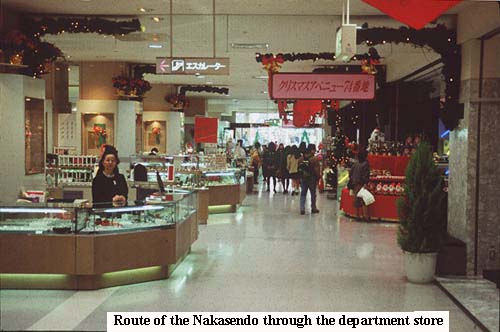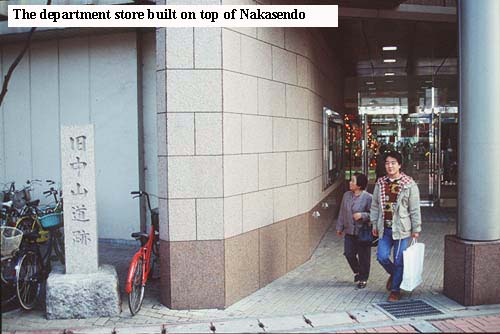The origins of department stores go back to 1673 when the Mitsui family established a dry-goods store in Edo, at the terminus of the Nakasendo. The shop was eventually renamed Mitsukoshi in 1928 and was the basis for the commercial success of the family; Mitsui became an extended corporation before World War II and has continued to be a dominant group of businesses after 1945. Mitsukoshi is the largest department store in Japan, with branches in major European, North American and Asian cities.

Japanese department stores have developed the idea of one-stop shopping to the extreme. The best department stores include amusement parks and pet shops on the roof, numerous restaurants one or two floors below and food shops of every variety in the basement (or basements). In between are floor after floor of every kind of merchandise and a vast variety of services: real estate subsidiaries, travel agents, cemetery managers, and concert ticket sales outlets are often to be found. Since the 1960s, in the face of severe competition from discount houses since the 1960s, department stores have often moved into expensive, high quality goods and have continued their prominence in the market although they have lost market share. Thus, many department stores also include art galleries which import wonders such as the Mona Lisa as a means of gaining a good reputation as well as bringing vast numbers of people into the store.
Since the 1930s, private railways have developed department stores at their terminals. The stores encourage use of the railways as well as turning a profit on their own merits. Hankyu Department Stores and Seibu Department Stores are two of the most prominent of this type of store and they too have expanded into luxury goods and overseas operations.
Department stores have had their operations limited to protect small businesses. Laws have made it very difficult, if not impossible, for department stores and chain stores to open new operations in local areas. Thus, the giant Mitsukoshi only had 14 domestic department stores in 1982, including one in Ginza (the very popular and fairly expensive shopping and entertainment area) while Hankyu had just six. Sometimes department stores end up in very peculiar situation. One in old Kumagaya post-town, now a middle-distance suburb of Tokyo, ended up right on top of the Nakasendo whose path through the store was duly marked by stone pillars at the front and back entrances.


